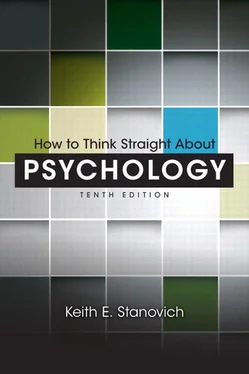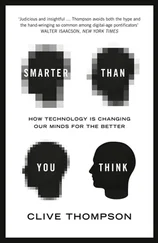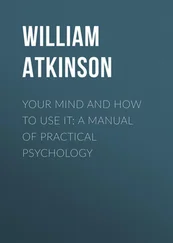The mechanisms of peer review vary somewhat from discipline to discipline, but the underlying rationale is the same. Peer review is one way (replication is another) that science institutionalizes the attitudes of objectivity and public criticism. Ideas and experimentation undergo a honing process in which they are submitted to other critical minds for evaluation. Ideas that survive this critical process have begun to meet the criterion of public verifiability. The peer review process is far from perfect, but it is really the only consumer protection that we have. To ignore it is to leave ourselves at the mercy of the multimillion-dollar pseudoscience industries that are so good at manipulating the media to their own ends (see Chapter 12). In subsequent chapters, we will discuss in much more detail the high price we pay for ignoring the checks and balances inherent in the true scientific practice of psychology.
Empirically Solvable Problems: Scientists’ Search for Testable Theories
Science deals with solvable, or specifiable, problems. This means that the types of questions that scientists address are potentially answerable by means of currently available empirical techniques. If a problem is not solvable or a theory is not testable by the empirical techniques that scientists have at hand, then scientists will not attack it. For example, the question “Will three-year-old children given structured language stimulation during day care be ready for reading instruction at an earlier age than children not given such extra stimulation?” represents a scientific problem. It is answerable by currently available empirical methods. The question “Are human beings inherently good or inherently evil?” is not an empirical question and, thus, is simply not in the realm of science. Likewise, the question “What is the meaning of life?” is not an empirical question and so is outside the realm of science.
Science advances by positing theories to account for particular phenomena in the world, by deriving predictions from these theories, by testing the predictions empirically, and by modifying the theories based on the tests. The sequence might be portrayed as follows: theory → prediction → test→ theory modification. So what a scientist often means by the term solvable problem is “ testable theory.” What makes a theory testable? The theory must have specific implications for observable events in the natural world; this is what is meant by empirically testable. This criterion of testability is often called the falsifiability criterion , and it is the subject of Chapter 2.
By saying that scientists tackle empirically solvable problems, we do not mean to imply that different classes of problems are inherently solvable or unsolvable and that this division is fixed forever. Quite the contrary: Some problems that are currently unsolvable may become solvable as theory and empirical techniques become more sophisticated. For example, decades ago historians would not have believed that the controversial issue of whether Thomas Jefferson fathered a child by his slave Sally Hemings was an empirically solvable question. Yet, by 1998, this problem had become solvable through advances in genetic technology, and a paper was published in the journal Nature (Foster et al., 1998) indicating that it was highly probable that Jefferson was the father of Eston Hemings Jefferson.
This is how science in general has developed and how new sciences have come into existence. There is always ample room for disagreement about what is currently solvable. Scientists themselves often disagree on this point as it relates to a particular problem. Thus, although all scientists agree on the solvability criterion, they may disagree on its specific applications. Nobel laureate Peter Medawar titled one of his books The Art of the Soluble (1967) to illustrate that part of the creativity involved in science is finding the problem on the farthest edge of the frontier of human knowledge that will yield to empirical techniques.
Psychology itself provides many good examples of the development from the unsolvable to the solvable. There are many questions (such as “How does a child acquire the language of his or her parents?” “Why do we forget things we once knew?” “How does being in a group change a person’s behavior and thinking?”) that had been the subjects of philosophical speculation for centuries before anyone recognized that they could be addressed by empirical means. As this recognition slowly developed, psychology coalesced as a collection of problems concerning behavior in a variety of domains. Psychological issues gradually became separated from philosophy, and a separate empirical discipline evolved.
Cognitive psychologist Steven Pinker (1997) discusses how ignorance can be divided into problems and mysteries. In the case of problems, we know that an answer is possible and what that answer might look like even though we might not actually have the answer yet. In the case of mysteries, we can’t even conceive of what an answer might look like. Using this terminology, we can see that science is a process that turns mysteries into problems. In fact, Pinker (1997) noted that he wrote his book How the Mind Works “because dozens of mysteries of the mind, from mental images to romantic love, have recently been upgraded to problems” (p. ix).
Psychology and Folk Wisdom: The Problem With “Common Sense”
We all have implicit models of behavior that govern our interactions and our thoughts about ourselves and other people. Indeed, some social, personality, and cognitive psychologists study the nature of these implicit psychological theories. Rarely do we state our theories clearly and logically. Instead, we usually become aware of them only when attention is drawn to them or when we find them challenged in some way. Actually, our personal models of behavior are not really coherent in the way that an actual theory would have to be. Instead, we carry around a ragbag of general principles, homilies, and clichés about human behavior that we draw on when we feel that we need an explanation. The problem with this commonsense knowledge about behavior is that much of it contradicts itself and is, therefore, unfalsifiable (the principle of falsifiability is the topic of the next chapter).
Often a person uses some folk proverb to explain a behavioral event even though, on an earlier occasion, this same person used a directly contradictory folk proverb to explain the same type of event. For example, most of us have heard or said, “look before you leap.” Now there’s a useful, straightforward bit of behavioral advice—except that I vaguely remember admonishing on occasion, “he who hesitates is lost.” And “absence makes the heart grow fonder” is a pretty clear prediction of an emotional reaction to environmental events. But then what about “out of sight, out of mind”? And if “haste makes waste,” why do we sometimes hear that “time waits for no man”? How could the saying “two heads are better than one” not be true? Except that “too many cooks spoil the broth.” If I think “it’s better to be safe than sorry,” why do I also believe “nothing ventured, nothing gained”? And if “opposites attract,” why do “birds of a feather flock together”? I have counseled many students to “never to put off until tomorrow what you can do today.” But I hope my last advisee has never heard me say this, because I just told him, “cross that bridge when you come to it.”
The enormous appeal of clichés like these is that, taken together as implicit “explanations” of behavior, they cannot be refuted. No matter what happens, one of these explanations will be cited to cover it. No wonder we all think we are such excellent judges of human behavior and personality. We have an explanation for anything and everything that happens. Folk wisdom is cowardly in the sense that it takes no risk that it might be refuted.
Читать дальше












